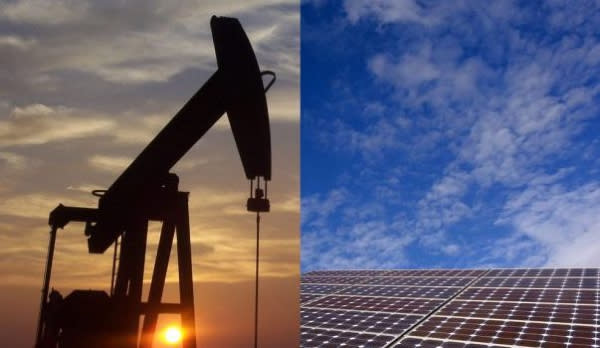Why Sustainability Is So Important For The Property Industry

Green buildings and green building features are on the rise in Malaysia, as architects, construction companies, and developers all strive to reflect the importance of sustainability in building design and development.
But why, you might ask? You’ve come to the right place!
Sustainability is a term that likely triggers images of monstrous power stations vs. small solar farms; fume-filled internal combustion engines vs. sleek electric vehicles; and even more natural challenges like battling deforestation.
The reality is that building sustainability is an increasingly important part of the real estate industry, and a vital jigsaw piece in the puzzle of global climate change.
Creating a sustainable future goes way beyond just the obvious areas, and when you dig down into the numbers, it’s clear why sustainability is important for the property industry. Let's take a look!
The Carbon Footprint Of Property
The emissions footprint of the global building sector hit a record high in 2019, where it was responsible for 38% of total global energy-related carbon dioxide (CO2) emissions, according to the United Nations Environment Programme (UNEP).
The 9.95 GtCO2 of emissions generated by that sector alone is roughly equal to the annual carbon emissions of China – the world’s single largest emitting country today.


PropertyGuru Tip
The term 'GtCO2' stands for 'gigatonnes of carbon dioxide equivalent'. <strong>Did you know that ONE gigatonne is a thousand million tonnes?</strong> This term is basically a method that uses carbon dioxide (CO2) to measure the equivalent amount of greenhouse gases (GHG) that is released.
If you can imagine how pointless it would be trying to make a sustainable future for the planet without involving China, then you can recognise the importance of involving the building sector in finding a global solution too.
These emissions matter because of the terrible and complicated impact that greenhouse gases (GHGs) have on our environment. Hold onto the bunsen burners kids, because this bit gets sciency!
GHGs such as CO2 build up in our environment, changing the way that our atmosphere absorbs and ‘holds in’ solar energy from the sun. Without pretending to be expert climate scientists – that’s bad news.
You see, increasing the amount of warmth the Earth captures and retains from the sun causes global temperatures to rise.
This will disrupt weather patterns leading to more extreme conditions; triggering drought in one place, floods in another, sometimes everything happens all in the same place, and generally just making the planet a worse place to live. So, definitely bad!
“Rising emissions in the buildings and construction sector emphasise the urgent need for a triple strategy to aggressively reduce energy demand in the built environment, decarbonise the power sector, and implement materials strategies that reduce lifecycle carbon emissions,” said Inger Andersen, Executive Director of the UN Environment Programme (UNEP).
The Paris Climate Agreement – the key international agreement designed to address global temperature rises and reduce the impact of climate change – sets out a target to reduce building emissions and achieve net-zero emissions for the sector by 2050.
That means a comprehensive overhaul to ensure that the building industry’s carbon footprint is balanced. We’ve got to cut down our carbon guys! That’s what sustainability is all about when it comes to emissions.
The current estimate is that achieving that goal will require direct emissions from buildings to half by 2030, and indirect emissions will need to fall by 60%. So what does all that mean?
Source: https://globalabc.org/sites/default/files/inline-files/2020%20Buildings%20GSR_FULL%20REPORT.pdf
Emissions From The Buildings Construction Industry
Buildings construction industry emissions are a big part of the carbon footprint left behind. The most obvious examples of this are the materials used in construction, such as cement and steel.
Cement is a huge elephant in the room when it comes to CO2 emissions. It’s often referred to as the ‘second most-consumed resource on the planet’ (after water), and is responsible for an estimated 8% of the world’s carbon emissions, according to some analysis.
It’s not just the energy used to create these materials we have to worry about either, it’s the carbon footprint of things like transport too. Transporting heavy materials like steel across the world will all add to the carbon burden.
The impact of materials on emissions is why there’s a growing focus on using more sustainable materials for construction.
Direct Emissions In The Building Industry
Direct emissions in the industry are often closely linked to the operation of buildings, and mainly focus on things like fuel used for heating and cooling.
The more fuel we burn to operate our buildings, the more carbon emissions we release. It’s a complex question of course. We obviously all need homes to live in, and we need those homes to be habitable.
Living in a giant glass skyscraper in Kuala Lumpur wouldn’t be comfortable without air conditioning, in the same way that living in a bungalow in Alaska wouldn’t be possible without fuel for heating!

Green buildings offer a range of benefits that can help tackle this challenge, improving insulation in cold climates, while reducing energy use through improved efficiency and smart planning in warmer environments.
You don’t have to pay beyond your means to access these benefits either. In our article 5 Easy Ways To Make Your House More Sustainable, we explain some simple ways to help tackle the carbon footprint of your own home.
Indirect Emissions In The Building Industry
Indirect emissions can be a real problem, and often harder for the real estate industry to tackle itself. These are emissions that are indirectly created by the needs of buildings, and heavily related to the electricity used.
Since electricity in many countries is generated with fossil fuels, that means that the more we use in our buildings, the more indirect emissions we are creating.
Creating more energy efficient green buildings is a powerful way to tackle these emissions. The more efficient a building is, the less electricity it will consume, and less indirect emissions it will release.
Introducing elements like rooftop solar panels is a great place to start, enabling buildings to be powered by self-generated green energy.

There are increasingly innovative ways these new technologies and design opportunities are being delivered in sustainable buildings appearing around the world.
The UNEP report highlights that spending for energy efficient buildings increased in 2019 for the first time in three years. That’s good news for indirect emissions.
Investment in energy efficiency increased by USD152 billion (roughly RM629 billion) in 2019, up 3% from 2018, but still a long way short of the USD5.8 trillion (roughly RM24 trillion) spent in total on the building and construction sector.
The positive news is that understanding of the need for sustainable real estate is clearly growing in Malaysia, with studies showing an increasing focus on sustainable building features. The more we understand the problem, the more momentum there is in tackling it.
When it comes to sustainability in the property industry, there’s no doubt that designing and delivering global solutions to reduce carbon emissions are responsibilities that we ALL share.
Relevant Guides:





